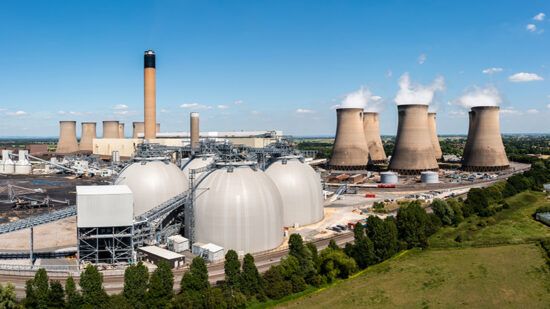The 2015 COP21 hosted in Paris paved the way for the growing number of net zero carbon emissions targets around the world, in support of meeting objectives of the Paris Agreement. The recent COP26 put renewed pressure on governments and businesses to set net zero targets and to make immediate changes to help lower carbon emissions and consequently global warming.
Buildings play a major role in supporting the transition to a low carbon economy and society, as the operation of buildings is responsible for 28% of global carbon emissions, while a further 14% come from the residential sector and 11% from construction processes.
Meeting net-zero ambitions will require a fundamental transformation in the construction and operation of both commercial and residential buildings. It is also on us, as investors with long-term interests, to future-proof our investments and ensure they are resilient to a changing world. Energy intensive buildings could become less desirable and more costly to own and occupy as more government regulations and taxation changes are likely. We believe that being proactive with net-zero buildings now will create better performing assets and generate positive outcomes for investors over the long term.
Some 80% of the buildings that will exist in 2050 have already been built, which does make net zero ambitions slightly more challenging because there are major gains from adapting how buildings are initially designed and configured to be more sustainable. As such, retrofitting existing buildings is going to be central to delivering the net zero transition.
The relationship between the asset owner and the firms and individuals that use the buildings is fundamental to effective change. It is the occupier that decides how the building is used. Buildings that are not used efficiently won’t achieve the intended energy performances whether the building has been constructed sustainably or not.
Wider changes in the relationship between asset owners and occupiers are giving the owners more influence over the energy performance of buildings. Occupiers are increasingly moving towards flexible options and a greater proportion of services are provided by the building owner so the scope for influence has increased.
The influence can be direct, for instance in sourcing and monitoring energy consumption, and indirect, with a greater level of day-to-day contact asset owners can increasingly ‘nudge’ occupiers to low-carbon behaviours.
This is coupled with the rapid increase in the number of companies committing to introduce science-based targets for their carbon emissions. This will create aggressive targets for them to reduce energy and for many service businesses this will be unachievable without drastic reductions achieved through the buildings they occupy and so will put pressure on the occupiers to be more climate conscious.
The impact of sustainability on asset values
There is now broad evidence that stronger sustainability credentials can be shown to positively impact asset values. A survey in 2020 aggregating the results of 70 academic studies. found that green building certifications were typically connected to higher rents, high occupancy, lower yields, and higher sales prices.
On a residential level, we know that consumers are increasingly aware of their carbon footprint and may begin to actively choose to rent homes with demonstrable lower energy needs over those without in the future and are willing to pay a premium for sustainable goods.
With this prediction that users of real estate will increasingly select their spaces on the basis of environmental outcomes, it is likely that a green premium, which is already apparent in certain parts of the market such as London offices, will emerge more widely at different speeds according to property type and target market.
The costs of moving to net zero
While some energy reduction initiatives can be achieved at minimal cost, specifying new buildings or refitting existing buildings to net-zero standards come with upfront costs. There is likely to be a lag between capital expenditure and seeing the benefit to asset valuations, which may create a short-term drag on investment performance.
Set against this though are the benefits of reducing risk. Property investors are used to the idea of managing ESG risk in terms of physical factors such as flooding but transition risk, the potential for consumer preferences and regulation to shift and negatively impact asset values, is equally, if not more, important.
All in all, it is clear the role that the decarbonisation of buildings must play in the transition towards net zero. An allocation to real estate that puts this at the heart of the investment objective can play a part in helping investors align their portfolios in support of this objective. We understand promoting net zero is not the only ESG objective that matters, but it is a robust foundation.








